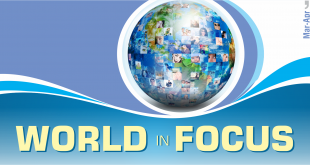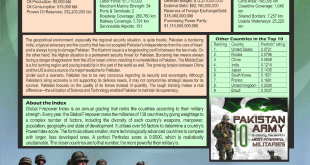Conflict is a constant in modern life and this is also the case in the delivery of services by the public administration. It occurs due to diversity of views, difference of opinion and/or conflicting interests. It may also arise among employees and between public administration and service-users and service-providers. Disagreements, difference of opinion or attitude, needs and views on the service challenges are inevitable among employees in public administration. They can be a source of strength and creativity, but they can sometimes turn into conflicts. If we do not adequately respond to these conflicts, or stop them before they fully develop, performance and service-delivery will be affected. And, for doing so, employees need essential new knowledge and access to new tools.
Conflicts
Conflicts are important agents of social affairs and social development. They can be both constructive and destructive. Most people do not know how to analyze conflict situations and how to plan and look for possible solutions. The obvious lack of knowledge and skills in this area often contributes to the escalation of conflict, and even to use of force and violence in their resolution.
Definition
Conflict is also biologically wired where the preservation is the priority. Any attack on the integrity of a person (direct or indirect) causes two reactions: fight (reciprocation attacks) or flight (withdrawal from the situation). The environment in which we live shapes both our view of the world and that of the conflicts. Poor interpersonal relationships, as a consequence of unresolved conflicts, could last for months, even years; leaving a negative impact on human resources, even long after the situation that caused the conflict had fallen into oblivion. Therefore, the conflict management is very demanding – but achievable – challenge for public administration.
There are currently two main research directions in conflict management:
i. All factors should be taken into account
If possible, all the factors before, during and after the conflict are taken into account. The model is given accurate and detailed formalization in order to obtain a true image of the original. It involves very complex calculations, but gives good results.
ii. All basic factors are known or assumed
All basic factors of the conflict are known or assumed (parties to the conflict, the causes, nature, potential consequences, etc.) while only one or two parameters are done in detail. In this case, results are fast but less reliable.
Factors behind Conflicts
Public administration is a mix of organs, organizations, bodies, interdependent sets of competencies, tasks, specifically connected and managed with a view to implement the legal norms, organizational tools, methods of management processes and procedures in order to fully comply with the mandate of the elected government. Its main functions are: service, regulatory, organizational and executive. Following changes provide base for conflicts:
i. Societal norms
Public administration is influenced by traditions, cultural milieu, and history of relations between politics and administration and external influences.
ii. Transition and level of development
There is also a process of transition and the level of development of the private sector, the relationship between society and government, and the conflicts that arise in relations between employees and service-users.
To perform high-quality work, employees must have appropriate conflict-management knowledge. Administrative authorities, organizations and local self-government units are much more than simply their sum. If conflicts were managed only within a single service or sector, public administration as a whole would not have a major strategic advantage. The resulting experience through success or failure would be available to one department or service, and not to all others.
Conflicts in public administration
Conflict may arise as a result of different needs and interests of service-users and public administration as their provider. When customers wish to achieve their goals, and note that service-provider (civil servant) stands in the way, it usually leads to conflict. Such conflicts can be:
a. Personal—disagreement between the service-user and service-provider
b. Communicational—language difficulties
c. Organizational—blurred boundaries of service responsibilities
Essential skills for dispute resolution
Conflicts within the organizational units can have short- and long-term consequences for the whole administration. Dissatisfaction and emotional exhaustion of employees, increased stress, poor working environment, reduced creativity and service efficiency are just some of the symptoms that occur when the conflict is not managed properly. The consequences of conflicts with service-users can also have a bad effect on the organizational units of public administration. Some essential skills are discussed below:
i. Create and maintain a bond
The key to defusing conflict is to form a bond, or to re-bond, with the other party. We do not have to like someone to form a bond with him or her. We only need a common goal. Treat the person as a friend, not an enemy, and base the relationship on mutual respect, positive regard and cooperation.
ii. Dialogue and negotiate
At all times, it is important to keep the conversation relevant, stay focused on a positive outcome and remain aware of the common goal. It is imperative to avoid being hostile or aggressive. The next stage is negotiation in which we add bargaining to the dialogue. Talking, dialogue and negotiation create genuine, engaging and productive two-way transactions.
iii. Use diplomacy
It means raising a difficult issue without being aggressive or hostile. Once an issue is raised, we can work on sorting it out and finding a mutually-beneficial outcome. We should not directly accuse the offenders; we should be direct, engaging and respectful, always helping the other person to ‘save face’. In addition, timing is also important. It would not be beneficial to raise a difficult topic just as a senior colleague is leaving to the airport. Choosing the right time and the right circumstances are part of an effective conflict-management strategy.
 iv. Understand what causes conflict
iv. Understand what causes conflict
To create a dialogue aimed at resolving the conflict, first understand the roots of disagreement. Among the common causes of disagreement are differences over goals, interests or values. There could be different perceptions of the problem, such as: ‘it’s a quality control problem’ or ‘it’s a production problem’, and there may also be different communication styles. Power, status, rivalry, insecurity, resistance to change and confusion about roles can also create conflicts. It is crucial to determine whether a conflict relates to interests or needs. Interests are more transitory and superficial, such as land, money, or a job; needs are more basic and not for bargaining, such as identity, security and respect. Many conflicts appear to be about interests, while they are actually about needs. The most conflict-provoking losses have to do with needs, and those needs may connect to the deeper wounds people have suffered in life.
v. Use the law of reciprocity
The law of reciprocity is the foundation of cooperation and collaboration. What you give out is likely to be what you get back. Researchers have recently discovered mirror neurons in the brain, suggesting that our limbic system (emotional brain) that establishes empathy re-creates the experience of others’ intentions and feelings within ourselves. Mutual exchange and internal adaptation allows two individuals to become attuned and empathetic to each other’s inner states. Hence, a powerful technique to master in any kind of dispute resolution is to empathize with the feelings and views of the other individual by managing what we express — both verbally and non-verbally. This social awareness allows you to make the right concessions at the right time.
vi. Build a positive relationship
Once a bond has been established, we must nurture the relationship and also pursue our goals. We need to balance reason and emotion, because emotions such as fear, anger, frustration and even love may disrupt otherwise thoughtful actions. We need to understand each other’s point of view, regardless of whether we agree with it or not. The more effectively we communicate our differences and our areas of agreement, the better we will understand each other’s concerns and improve our chances of reaching a mutually-acceptable agreement. The deepest bonds are founded on what the eminent psychologist Carl Rogers called ‘unconditional positive regard’. We can learn to communicate acceptance of the other person while saying no or disagreeing with a specific point or behaviour. Feeling accepted, worthy and valued are basic psychological needs. And, as hostage negotiation demonstrates, it is more productive to persuade than to coerce.
Approaches to Conflict Management
A. Conflict prevention—Zartman suggests that conflict can be anticipated and measures can be taken to prevent or at least limit its escalation. This is a very resource-intensive approach. Although early detection of conflict is a positive facet of this approach, it greatly limits the options when there is a failure to correctly identify the conflict. Even though this approach has had some success in dealing with regional and global conflicts, it has only limited utility for the public administrators, who have limited informational sources and inadequate resources to identify potential conflict.
B. Conflict control—Blackard and Gibson incorporate a combination of the other three approaches. Conflict-control seeks to resolve conflict, manage the effects of conflict or prevent the escalation of conflict. This approach incorporates analysis of the conflict, the creation of boundaries to control the effects of the conflict, and strategies to prevent future conflicts of a similar nature. However, this approach is even more resource-intensive than conflict-prevention; it requires the creation of a new layer of bureaucracy to monitor existing conflicts. In a time of resource downsizing, the approach is clearly beyond the reach of most public organizations.
C. Conflict resolution—It accepts the existence of conflict and emphasizes the finding of solutions. Although this approach does not label conflict as bad, it does stress that conflict has to reach a successful conclusion. This approach does not advocate how conflict is to be resolved but simply that it must be resolved. According to Avruch and Fisher, there is little guidance for public administrators in the management of conflict in their organizations. One of the major flaws with conflict resolution is that it always places the public administrator in a reactive or defensive position.
 Jahangir's World Times First Comprehensive Magazine for students/teachers of competitive exams and general readers as well.
Jahangir's World Times First Comprehensive Magazine for students/teachers of competitive exams and general readers as well.



